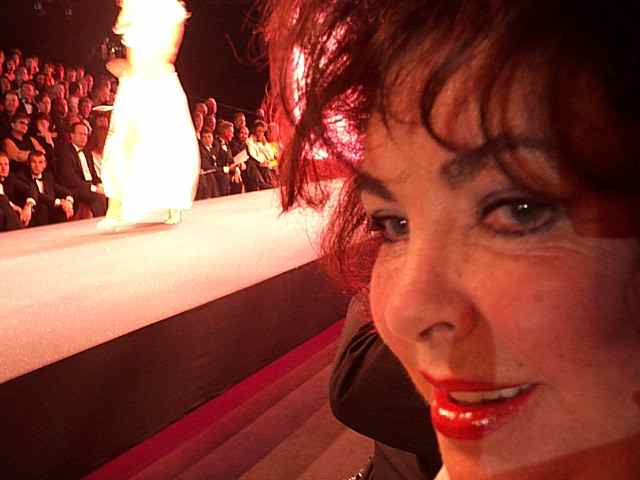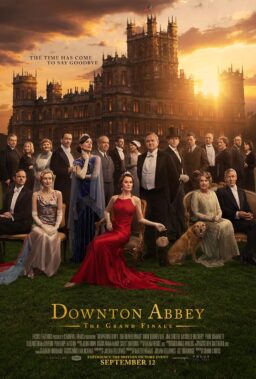Elizabeth Taylor, who was a great actress and a greater star, has died at age 79. Of few deaths can it be said that they end an era, but hers does. No other actress commanded more attention for longer, for her work, her beauty, her private life, and a series of health problems that brought her near death more than once.
Death came Wednesday at Cedars-Sinai Hospital in Los Angeles, where she had been hospitalized for six weeks with congestive heart failure. Her publicist, Sally Morrison, said in a statement: “Though she had recently suffered a number of complications, her condition had stabilized and it was hoped that she would be able to return home. Sadly, this was not to be.”
Miss Taylor became a star in 1944 with the enduring classic “National Velvet,” although her unique camera presence had already registered onscreen in “Jane Eyre” (1943), where as one of Jane’s young friends, she attracted attention. She worked in pictures steadily all her life; her final major starring role was in “Sweet Bird of Youth,” for television, in 1989, although she did some voice-over work, including the voice of Maggie Simpson in “The Simpsons” (1994). Her final onscreen performance came in “These Old Broads” (2001), also for TV, in which she played one of four aging actresses with Shirley MacLaine, Joan Collins and Debbie Reynolds — significantly, the woman whose husband, Eddie Fisher, Miss Taylor was said to have “stolen” in 1959.
Throughout her life, she won many awards, including best actress Oscars for “Who’s Afraid of Virginia Woolf” (1967) and “Butterfield 8” (1961). She also was nominated for “Raintree County” (1957), “Cat on a Hat Tin Roof” (1958), and “Suddenly, Last Summer” (1959). Other major film roles were in “A Place in the Sun,” “Giant,” “Father of the Bride,” “Little Women,” “Cleopatra,” and “Reflections in a Golden Eye.”
In 1993, she won the Academy’s Jean Hersholt Humanitarian Award, partly in recognition of her formidable commitment to charity, and in 1999, was named Dame Commander of the Order of the British Empire. The BBC reported that although she was the first actress to earn $1 million for a film, the money she raised for charity surpassed her lifetime earnings as an actress.
After her longtime friend Rock Hudson died of AIDS, she began the National AIDS Research Foundation, which later merged into the American Foundation for AIDS Research (AMFAR). Starting in 1985, the annual AMFAR auctions at the Cannes Film Festival became one of the world’s largest charity events, with movie moguls bidding against billionaires and arms dealers for prizes which essentially amounted to bragging rights.
Miss Taylor was famously married eight times (twice to Richard Burton) and joked about it, once saying she didn’t sleep with any more men than other actresses, but the difference was she married them.
Her first marriage came in 1950 at 18 to Conrad Hilton Jr., son of the hotel magnate. Her husband’s drinking and physical cruelty put an end to that marriage in eight months. In 1952, she married the actor Michael Wilding, who was the father of her sons Michael Howard Wilding and Christopher Edward Wilding. In 1957, she married impresario Mike Todd, who died in the 1958 crash of his private plane. They had a daughter, Elizabeth Francis, known as Liza.
Todd’s best friend was the singer Eddie Fisher, and as he and she comforted each other, their feelings blossomed into romance. Fisher left his wife Debbie Reynolds to marry Miss Taylor, creating a scandal and setting the stage for her next great romance, when she left Fisher for Richard Burton after they met on the set of the tumultuous production of “Cleopatra” in 1960. That ended Burton’s marriage to his wife Sybil.
Miss Taylor married Burton in 1964. Fisher, who had made Debbie Fisher a scorned wife, now became a scorned husband. As “Liz and Dick,” the two arguably became the most famous couple in the world. Both passionate, both legendary, both known to drink in excess, they lived on the stage of world publicity. Both at the height of their earning power, they lavished gifts of jewelry upon each other, maintained a famous yacht and helped to define the term “jet set.”
Their work together as a bickering couple with an imaginary child in Mike Nichols’ “Who’s Afraid of Virginia Woolf” (1966) was fancied by some reflect to their own hard-drinking private reality. It was based on the celebrated play by Edward Albee, and the film, in stark black and white, won 13 Oscar nominations, the only film ever to be nominated in every eligible acting category.
That film, plausibly the peak of Miss Taylor’s career, came a year before I began working as a film critic, and I never came into any real contact with her. I did however get a backstage glimpse of the Taylor Burton dynamic in 1969, when he was filming “Anne of the Thousand Days” in at Shepperton Studios outside London. They were scheduled to take their yacht to Wales the next day to witness Prince Charles invested as the Prince of Wales. In their dressing room, a family reunion was underway, including her daughter, his daughter and sister. Elizabeth was showing off an enormous sapphire ring he had just given her.
Miss Taylor didn’t star in that film, but they worked together as a rule (their best from that period was Franco Zeffirelli’s “The Taming of the Shrew,” in 1967). They were divorced in 1974, decided to remarry a year later, then divorced again. Her next husband was John Warner, a handsome Republican from Virginia, and she added Washington to the social circles in which she glittered.
Although she continued to work here and there, Miss Taylor had no need for money and devoted her main energies to charitable fund-raising. Her presence at an AMFAR event was royal in tone. But she was never slow to poke fun at herself, and said she was immune to criticism. By the late 1980s, she felt her drinking had gotten out of hand and checked into the Betty Ford Clinic in Ranch Mirage, Calif., where Larry Fortensky, a construction worker, was a fellow patient. They married, and although Fortensky was from a different world than Wilding, Todd, Fisher, Burton and Warner, the marriage (performed at her friend Michael Jackson’s Neverland Ranch) lasted five years.
Her life had been saved with an emergency tracheotomy in 1959 during a battle with pneumonia, and a brain tumor was found in the 1990s. In later years, she was unable to walk easily because of back problems.
But, oh, she was beautiful. The movie fan magazines celebrated her rare violet eyes, her voluptuous figure, her fiery spirit. Essentially raised in front of a camera, she was a gifted and versatile actress who held the screen against such figures as Spencer Tracy, Paul Newman, Mickey Rooney, Montgomery Clift, James Dean and Burton.
The dominant actor of her time was Marlon Brando, and she appeared opposite him in one of her best, most overlooked films, John Huston’s “Reflections in a Golden Eye” (1967). She played the domineering wife of Brando’s closeted Army major, in a story of adultery set on a Southern military base. They both took big chances, but audiences didn’t respond; perhaps they were such great stars, they couldn’t be accepted in what was essentially an art film.
In 1965, I was in South Africa, and during a long car journey north from Cape Town to Durban, I found myself in a little coastal town, now forgotten, staying in a hotel with a pool table in the lobby. There was one movie theater in town. It was playing “National Velvet.” I bought a ticket. It was a wonderful movie. Ever after that night, I’ve never had to wonder why Elizabeth Taylor seemed to be in her own category of stardom.
She is survived by her brother Howard; her children, Michael Wilding Jr., Christopher Wilding, Liza Todd Livey, and Maria Burton Carson, the daughter she and Burton adopted, and nine grandchildren.












